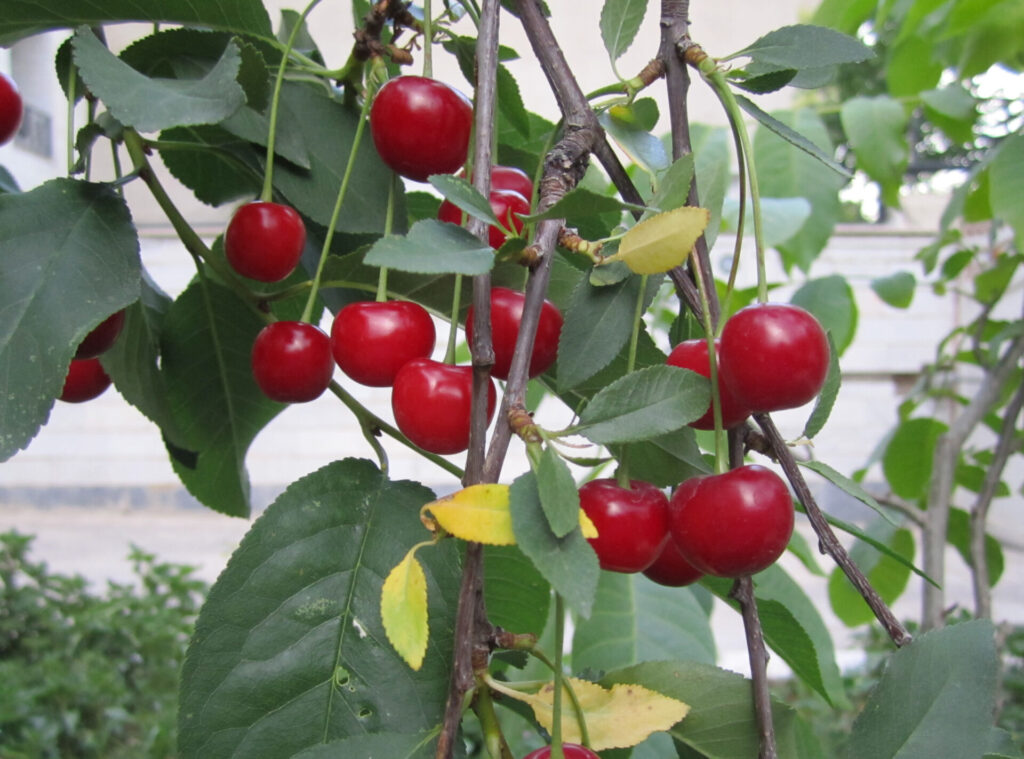Any of numerous trees and shrubs of the subqenus Prunus subg. Cerasus
producing a small fleshy round fruit with a single hard stone. Also valuable for its hardwood.
Cherry trees are very sensitive fruit-bearing trees.
Standard-sized trees tend to be more resilient and yield more cherries. They are larger in size and
have a longer lifespan than dwarf trees. Dwarf trees are smaller and take up less space. They also
yield fruit at a younger age, about 2 – 3 years old.
Both sizes are popular for growing cherries, and you should select the best size to suit your climate
zone and growing preferences. Dwarf trees are more sensitive because they have a less vigorous
root system. For sweet cherries, standard sized trees grow to about 20–40 feet (6.1–12.2 m) tall,
and dwarf trees grow to 8–15 feet (2.4–4.6 m). For tart cherries, standard adult trees grow about 20
feet (6.1 m) tall, and dwarf trees reach around 8–12 feet (2.4–3.7 m).
Cherries don’t grow very big until roughly 15 years of growing.






